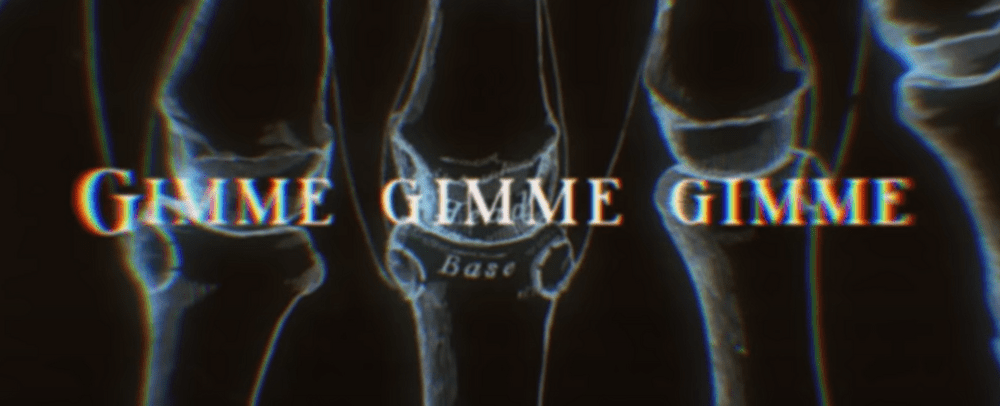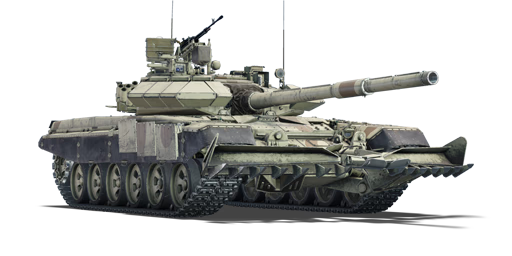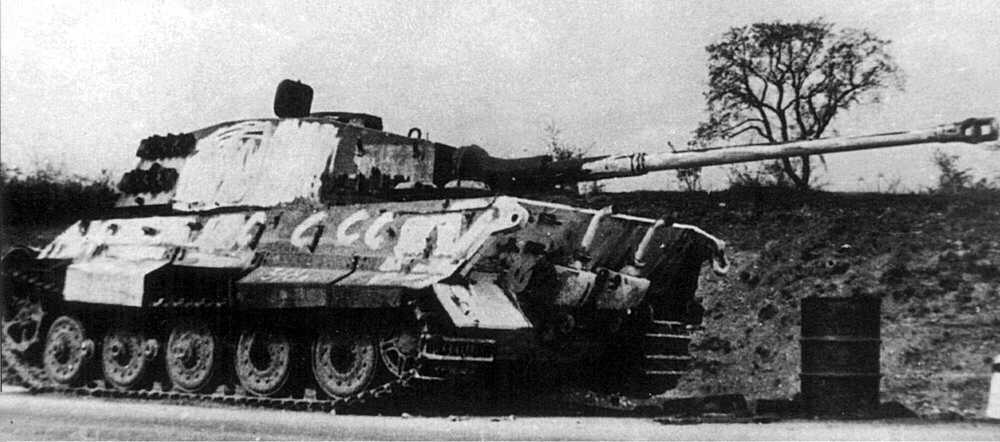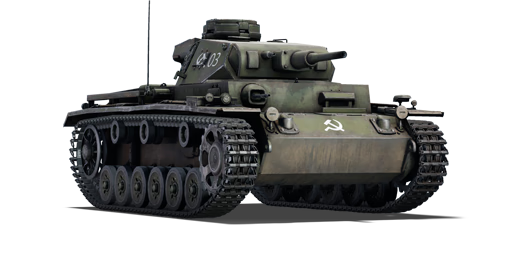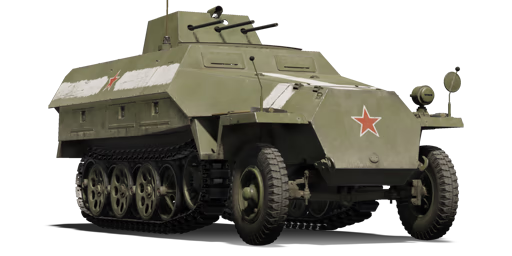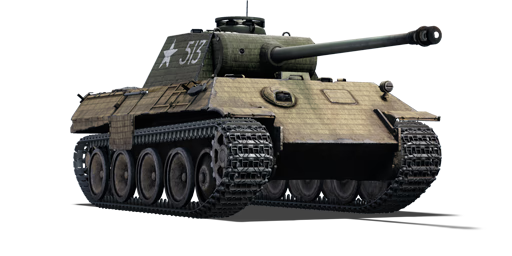- Yes
- No
- Research
- Premium
- Battle pass
- Squadron
- Event
- I said “No” to the first poll
 King Tiger - Trophy from the battle of Ogledow
King Tiger - Trophy from the battle of Ogledow
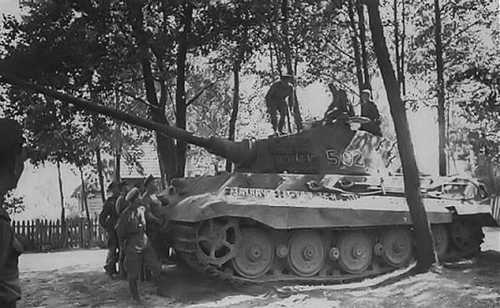
Soviet Soldiers inspecting their new trophy Tiger II #502
History
In August 1944, during the intense fighting on the Eastern Front, Soviet forces engaged German units near the village of Ogledów, Poland. This area became the site of a fierce confrontation between Soviet armored units and some of Germany’s most formidable tanks, including the King Tiger II. Between August 11 and 13, seven King Tigers were destroyed by Soviet forces, while six others were captured intact or nearly intact, representing one of the few opportunities for the Soviets to study these powerful machines firsthand.
Soviet troops, including elements of the 71st Independent Guards Heavy Tank Regiment, played a pivotal role in the battle. Guards Senior Lieutenant Udalov led his platoon in an ambush against a German column, successfully halting their advance and destroying multiple Tiger II tanks. His leadership and bravery earned him a nomination for the title of Hero of the Soviet Union, highlighting the significance of the engagement not just tactically but also for morale.
The captured King Tigers were transported to Soviet-controlled territory, where engineers and military specialists examined their armor, weapons, and mechanical systems. This allowed the Soviets to understand the strengths and weaknesses of the Tiger II, especially in comparison to their own heavy tanks, such as the IS-2. Notably, Soviet 122 mm shells proved capable of penetrating the Tiger II’s armor under combat conditions, informing future tactics for engaging these heavy German tanks.
Beyond the technical insights, the capture of these tanks provided a morale boost to Soviet forces, demonstrating that even the fearsome Tiger II could be overcome with planning, skill, and determination. The Ogledów engagement remains a remarkable example of how Soviet troops were able to neutralize and capture some of the most advanced German armored vehicles of World War II, turning enemy strength into a source of knowledge and advantage.
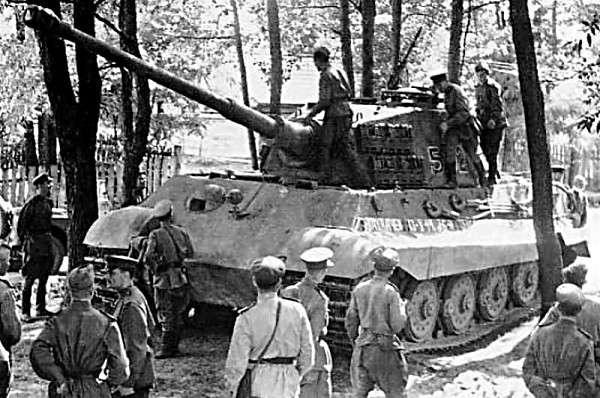
Another image of Soviet Soldiers inspecting their trophy King Tiger #502.
The Battle of Ogledów: A Soviet Triumph Over the King Tiger
"In August 1944, during the intense fighting near Ogledów, Poland, Soviet forces faced off against the formidable German King Tiger tanks. Over the course of three days, from August 11 to August 13, seven King Tigers were destroyed, and six were captured intact or mostly intact.
The engagement began when Soviet forces, including Guards Junior Lieutenant Oskin and Guards Captain Ivushkin, set up an ambush near the village of Ogledów. They camouflaged their T-34-85 tanks as haystacks to blend into the surroundings. As German tanks approached, the Soviet crews opened fire, destroying several King Tigers and forcing others to retreat.
One notable incident involved Senior Lieutenant Klimenkov, who, upon receiving reports of a German tank hiding behind a house, took action. He fired at the structure, destroying it and causing the German tank to retreat. Shortly after Soviet forces captured the vehicle.
The captured King Tigers provided valuable intelligence to the Soviets. One of the tanks was a commander’s vehicle, complete with maps and instruction manuals. A German prisoner confirmed that the battalion had been formed with 20 King Tigers and 20 Panzer IV tanks, but by August 16, only 26 tanks remained, many of which were damaged.
This battle marked a significant Soviet victory, showcasing their ability to overcome advanced German armor and gain crucial intelligence for future engagements."
Tiger II History
The King Tiger, or Tiger II, was Germany’s most feared heavy tank during World War II. Built as an upgrade to the Tiger I, it combined thick armor with a massive gun that could take out almost any Allied tank from long range. Introduced in 1944, the King Tiger carried the 8.8 cm KwK 43 L/71 gun and had sloped armor up to 150 mm thick, making it extremely tough to stop in a fight.
On the battlefield, the King Tiger was a beast. Its gun could destroy enemy tanks before they even got close, and its armor let it shrug off most attacks. But it wasn’t perfect. Weighing nearly 70 tons, it was slow and heavy, struggled in mud and soft terrain, and broke down more than lighter tanks. Fuel shortages and maintenance issues also meant that even though it was powerful, it couldn’t always be used to its full potential.
Despite these problems, the King Tiger made a real impact. It saw action on both the Eastern and Western Fronts, including in Normandy, the Battle of the Bulge, and the Soviet offensives on the Eastern Front. Its presence alone could shake the confidence of enemy troops. Only about 490 were ever built, so they were rare but highly respected on the battlefield.
The Soviets managed to capture King Tigers, giving them a chance to study the tank up close and learn how to counter it. The King Tiger became a symbol of German engineering. At the same time, its size and complexity showed that even the most advanced machines have limits. Today, it remains one of the most iconic tanks of the war, remembered as a true heavyweight of armored warfare.
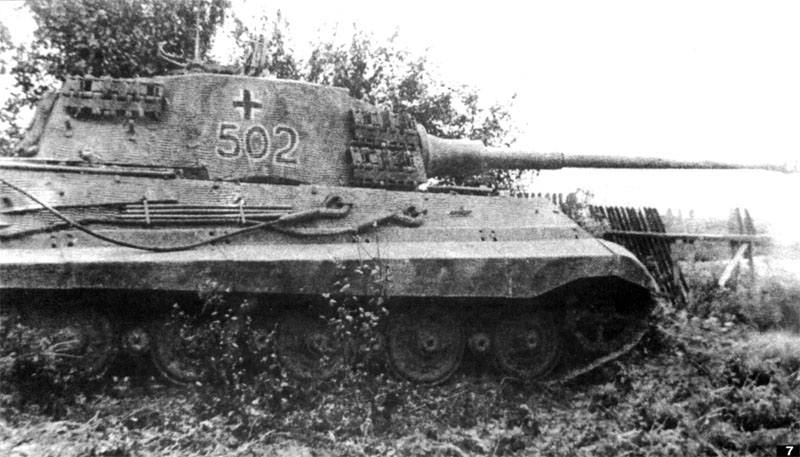
King Tiger #502 captured at the battle of Ogledow.
Specifications
Armament:
- Main Gun: 8.8 cm KwK 43 L/71
- Penetration: ~203 mm at 100 m, ~182 mm at 1000 m (AP)
- High-Explosive: 105 mm HE for infantry/soft targets
- Secondary: 2 × 7.92 mm MG 34 machine guns
Armor:
- Front Hull: 150 mm (sloped)
- Side Hull: 80 mm
- Rear Hull: 80 mm
- Turret Front: 180 mm
- Turret Sides: 80 mm
- Turret Rear: 80 mm
Mobility:
- Engine: Maybach HL 230 P30 V12, 700 hp
- Weight: ~69 tons
- Max Speed: 41.5 km/h (road), 20–25 km/h (off-road)
- Power-to-Weight Ratio: 10.1 hp/ton
- Operational Range: 120–150 km
